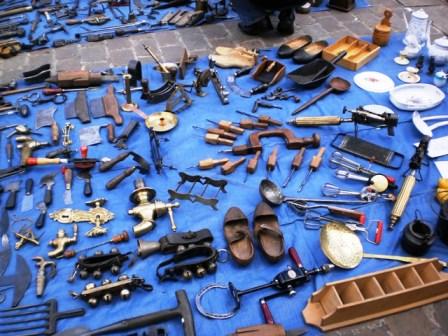What distinguishes us from other animals is the use of tools. Although, especially the technique of the anvil is also commonly used in the animal kingdom. Animals learn to use it also of their own kind.
Chimpanzees crash nuts with a stone, or fish with a sprig termites from a termite mound.
The bearded vulture (Gypaetus barbatus) drops heavy bones on a rock, so they break and he can eat the marrow. Seagulls do it with shells.
Sea otters at the east coast of North America chop oysters on a rock on their chest so that they can reach the content.
Japanese crows use cars. If the light is red, they put nuts on the road. At the next stop they return to get the cracked shells.
Darwin's finches on the Galapagos Islands pick insects from crevices in a tree or cracks in a rock with a broken spine of a cactus.
A green heron species from the tropics throws small objects in the water to attract fish.
Egyptian vultures hit or throw with a stone in their beak ostrich eggs, with their beak they would never be able to crack the shell.
Octopuses (Amphioctopus marginatus) go out with empty coconut shells, which they use as a shield and shelter in case of danger.
Also, some wrasses throw shells against coral until they break.

In captivity, many birds and monkeys learn to open a cage closure. (Wouldn’t you...)
And of course we have monkeys and elephants already gotten to painting.
Tools and devices that people have developed are much more complex.
So complicated that we do use them, but do not understand them anymore.
We restrict us to understandable, simple analog devices and tools.
A spade has a straight blade and is used to delve a hole or to dig. They can be relatively easy stabbed into the ground (or pushed with your feet). The slight bending of the blade is providing additional stability. They have a straight handle that is in a long 'spring' (and often a T-handle).
A shovel has a longer handle. The edges can be bended up.
The hollow shape with rounded corners serves to shovel loose material such as sand, mortar, etc.. She has a slightly curved handle. The sleeve where the handle fits in the tool forms an angle with the blade. The ridge in the extension of the socket gives the blade more rigid. Handles are mostly of ash.
(And yes, there are also hybrids.)
A shovel, trowel or plough should shine. By good maintenance and (almost) daily use, they do not get a chance to rust.
